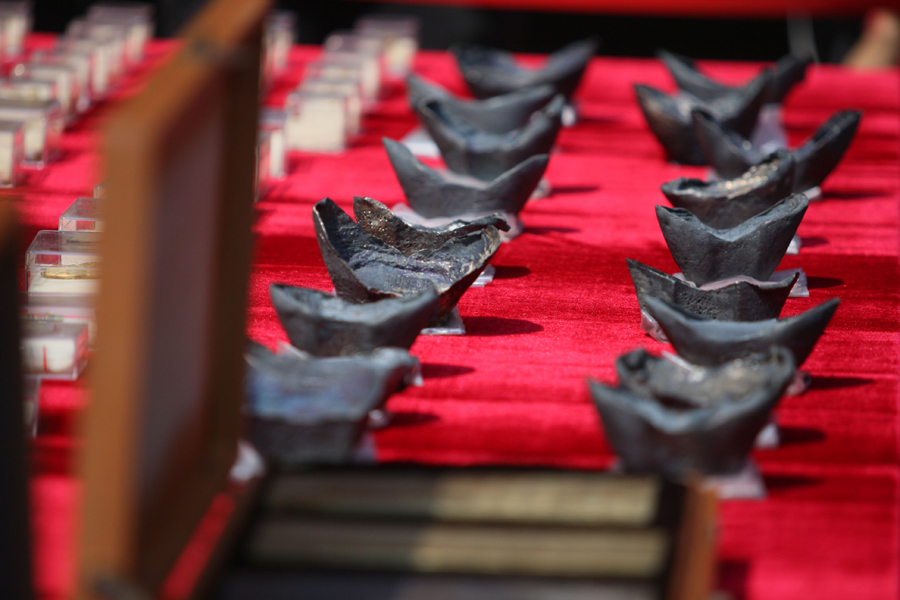 |
|
Ingots from the underwater site. [Photo by LIU LANYING/YANG ZHENGLAN/FOR CHINA DAILY] |
Recovered relics are stored in a cliff-tomb museum just across from the site.
Pengshan's wealthy residents ordered the boring of tombs into the sides of cliffs during the Han Dynasty.
Several of Jiangkou's 4,580 cliff tombs are housed in a museum in the town, curator Wu Tianwen says.
Every multi-chamber tomb contained a ceramic or stone coffin, and a kitchen and closet carved from rock.
Relics unearthed include a 1.4-meter-high bronze "money tree" with coins for leaves and the stone carving of a naked man and a woman engaged in foreplay.
The money tree is believed to be the largest of its kind unearthed from a Han Dynasty cliff tomb. The statue is considered one of China's earliest portrayals of sex in art, Wu says.
But another final resting place also draws many visitors to Jiangkou-the mausoleum of Peng Zu, from which Pengzu Mountain takes its name.
Lore claims he lived for 136 years (800 years according to the ancient Chinese calendar), which makes the site a magnet for visitors who hold traditional beliefs about longevity.